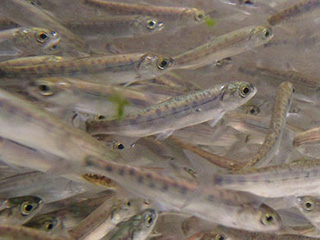In the context of California’s history-making drought — the worst in 1,200 years — experts at the 2015 California Water Law Symposium debated reasonable, beneficial, and wasteful uses of the state’s dwindling and precious water resources. Celebrating its eleventh year, this symposium, entitled “Wasted Water: Reasonable Use Law in 21st Century California,” was hosted by Golden Gate University School of Law in San Francisco on January 24 and saw participation from half a dozen law schools and experts from law firms, nonprofit organizations, government, and businesses across California.
2015 California Water Law Symposium: A Recap of the Russian River Frost Protection Panel
The 2015 California Water Law Symposium examined the topic of reasonable use in the 21st century. In this spirit, organizers from U.C. Hastings crafted a panel regarding the scope of the “reasonable use” doctrine and the limits of the State Water Resources Control Board’s (State Water Board) power to regulate water users.
The Consolidated Delta Smelt Cases
Nearly two-thirds of the California population and seven million acres of agricultural land receive water from the State Water Project (“SWP”) operated by the California Department of Water Resources (“DWR”) or the Central Valley Project (“CVP”) operated by the United States Bureau of Reclamation (Bureau) (SWP and CVP collectively referred to as “Projects”). In the Consolidated Delta Smelt Cases, two district court opinions for the Eastern District of California review a Biological Opinion (“BiOp”) issued in 2008 by the Fish and Wildlife Service (“FWS”) that placed restrictions on the Projects’ operations to protect endangered species.
In re Consolidated Salmonid Cases
Nearly two-thirds of the California population and seven million acres of agricultural land receive water from the State Water Project (“SWP”) operated by the California Department of Water Resources (“DWR”) or the Central Valley Project (“CVP”) operated by the United States Bureau of Reclamation (“Bureau”) (SWP and CVP, collectively referred to as “Projects”). In the Consolidated Salmonid Cases, the Eastern District Court of California reviewed a Biological Opinion (“BiOp”) issued in 2009 by the National Marine Fisheries Service (“NMFS”) that placed restrictions on the Projects’ operations to protect endangered species.
Review of California statutory and case law regarding groundwater extraction and the recently passed groundwater management bills
On August 29, 2014, the California Legislature approved a package of bills aimed at managing groundwater extraction. For 100 years, the Legislature had declined to regulate groundwater extraction, and courts have refused to expand local or state agency control over the practice.
From The Ground Up: California’s Drought Prompts Sweeping Groundwater Legislation
In the midst of California’s most severe drought in thirty years, legislators took an historic step towards remedying its long-term negative impacts on the state’s groundwater supply. On Friday, August 29th, the California Senate and Assembly passed a package of bills (SB 1168, SB 1319, and AB 1739) which aims to regulate the extraction of groundwater and establish a sustainable program of groundwater management over the next 50 years.
Groundwater and the Public Trust Doctrine: The Recent Scott River Decision
In Environmental Law Foundation et al. v. State Water Resources Control Board, 34-2010-800000583, the Superior Court of Sacramento issued a narrow ruling that the public trust doctrine applies to groundwater hydrologically connected to navigable waters.
California Oregon Power Co. v. Beaver Portland Cement Co., 295 U.S. 142 (1935)
In California Oregon Power Co. v. Beaver Portland Cement Co., the United States Supreme Court addressed whether federal land patents issued to western settlers pursuant to federal land disposition laws such as the Homestead Act also conveyed federal common law riparian rights to water. The Court held that federal land patents did not include riparian water rights as a matter of federal law. Instead, the Court held that by the 1877 Desert Land Act, Congress had severed water resources from the federal public domain lands; as a result, the states were and are free to develop and enforce their own laws addressing water allocation.
Frost Protection Diversions and Stranded Salmon — The California Court of Appeal Affirms State Water Board Reliance on Reasonable Use Law To Maintain Instream Flow
In California water law these days, there is increasing talk about the reasonable use provisions of the California Constitution and the California Water Code. These provisions provide that all water uses and methods of water diversion in California must be reasonable and cannot be wasteful.
Call for Review of the 2014 California Water Law Symposium
As follow-up to the Symposium, The California Water Law Journal would like to offer attendees the opportunity to publish articles about the panels.
